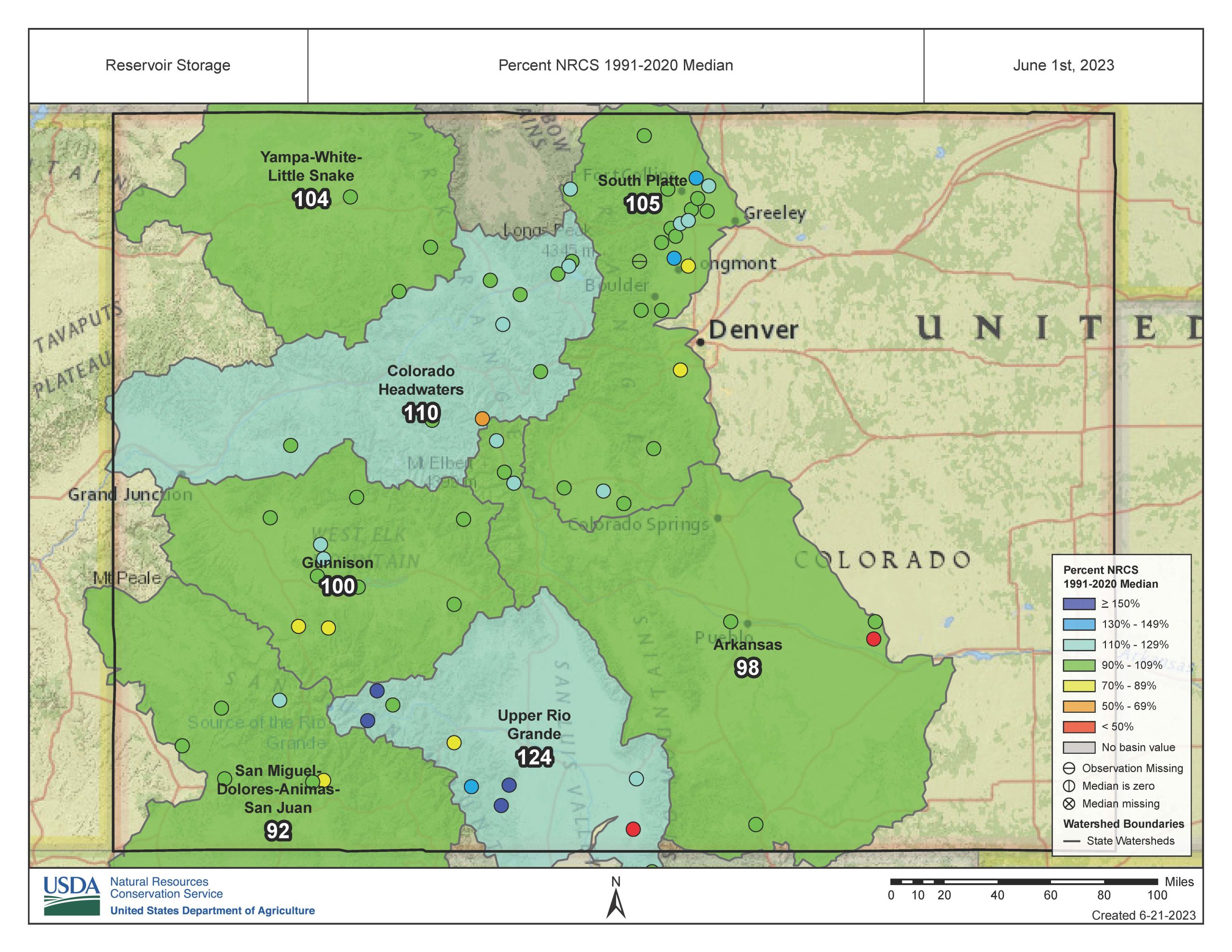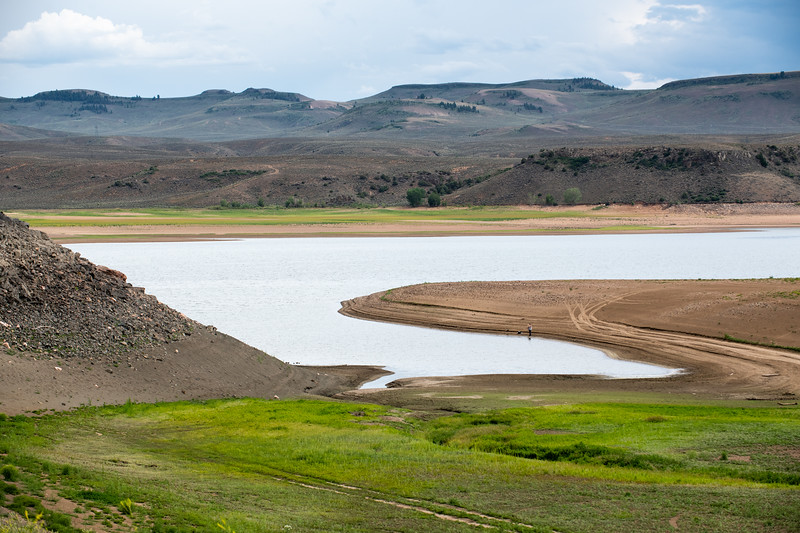Thanks to heavy winter snows and a rainy spring, Colorado’s system of water reservoirs hit 100% of normal this month, the fullest they’ve been in three years, according to the Natural Resources Conservation Service (NRCS).
Last year at this time, reservoirs were just 80% of normal.
“This is great news for reservoir storage,” said Karl Wetlaufer, assistant snow survey supervisor at the NRCS in Lakewood. Wetlaufer’s comments came Tuesday at a meeting of the state’s Water Availability Task Force, a multi-agency group that tracks snow and water supplies statewide and also monitors conditions for drought and flooding.
That “normal” statistic doesn’t mean full, but it does mean that the reservoirs have returned to health. At this time of year, that means the statewide system, which includes dozens of individual reservoirs, is 75% full, according to the NRCS.
The Rio Grande Basin, which has struggled with below-average mountain snows and dwindling storage for years, has seen its reservoirs surge back to life this year, with stored supplies measuring 124% of normal. Last year its reservoirs stood at just 83% of normal.
In fact, in 2022 all the reservoirs across the state’s major basins were low, with the South Platte River Basin coming closest to health, registering 98% of normal.

“It’s really encouraging to see almost all of our major (river) basins increase, so significantly,” Wetlaufer said.
Colorado is home to the headwaters of the seven-state Colorado River system and the vast majority of the drought-ridden region’s water supplies originate here. Thanks to the heavy winter snows and healthy runoff, Lake Powell and Lake Mead, the two largest reservoirs in the nation, are gaining as well.
“I usually feel like a broken record talking about drought,” said Assistant State Climatologist Becky Bolinger, who is a member of the task force. “But now I get to talk about a bunch of water.”
And all that water has largely pulled Colorado out of drought, with just a few small areas of the state, including parts of Summit County, as well as northeastern and southeastern Colorado, registering as abnormally dry, the least intense level of drought, according to the U.S. Drought Monitor.
Bolinger said the weather pattern known as El Niño has established itself and is likely to remain in place until next spring. During El Niño periods, usually lasting months though sometimes years, the Pacific Ocean’s surface temperatures are warmer than normal. Warm waters cause a shift in the Pacific jet stream, causing areas in the northern U.S. to become drier and warmer than usual, and the gulf and southeast to experience wetter conditions than usual.
For the past three years, La Niña has dominated Colorado’s weather cycle, bringing much drier conditions to Colorado’s southwestern region and heavy snows to its northern mountains.
That is likely to change this year as the El Niño pattern takes hold.
“Generally [El Niño] is good for our state, because it means more precipitation,” Bolinger said, but in the coming weeks, much warmer temperatures are predicted to arrive and the summer monsoon season is likely to weaken.
“Remember, we live in Colorado, it will dry out again,” Bolinger said. “We aren’t going to stay in this wet pattern forever. Enjoy it while it lasts.”
Fresh Water News is an independent, nonpartisan news initiative of Water Education Colorado. WEco is funded by multiple donors. Our editorial policy and donor list can be viewed at wateredco.org.


 Print
Print